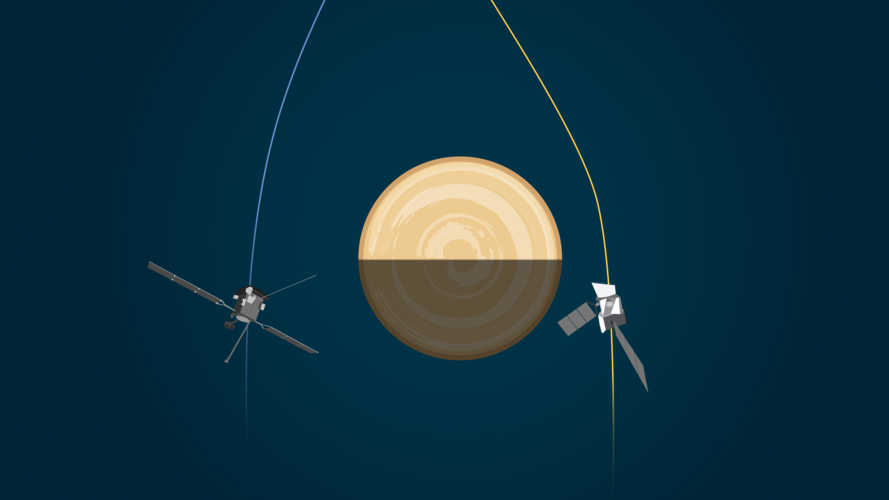The two spacecraft need the gravitational swingby to help them lose a little orbital energy in order to reach their destinations towards the centre of the Solar System. The double flyby also offers an unprecedented opportunity to study the Venus environment from different locations at same time and, moreover, in locations that are not typically visited by a dedicated planetary orbiter.
Solar Orbiter, a partnership between ESA and NASA, will fly by Venus on 9 August with a closest approach of 7995 km at 04:42 UTC. Throughout its mission it makes repeated gravity assist flybys of Venus to get closer to the Sun, and to change its orbital inclination, boosting it out of the ecliptic plane, to get the best – and first – views of the Sun’s poles.
BepiColombo, a partnership between ESA and JAXA, will fly by Venus at 13:48 UTC on 10 August at an altitude of just 550 km. BepiColombo is on its way to the mysterious innermost planet of the solar system, Mercury. It needs flybys of Earth, Venus and Mercury itself, together with the spacecraft’s solar electric propulsion system, to help steer into Mercury orbit against the immense gravitational pull of the Sun.



